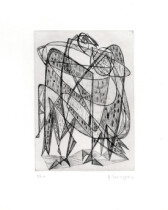Princess with a monkey
Date: 1913 ; RigaLatvia in terms of modern geography
Art Form: Painting
Dimensions: 145.5 X 69.5 cm (57.28 X 27.36 in)
.jpg)


Date: 1913 ; RigaLatvia in terms of modern geography
Art Form: Painting
Dimensions: 145.5 X 69.5 cm (57.28 X 27.36 in)
.jpg)

